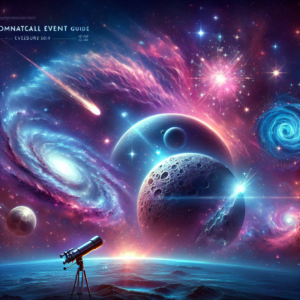Harmony in Creation: Exploring the Intersection of Faith, Science, and the Biblical Narrative
In a world often characterized by division and conflict, the intersection of faith and science offers a profound opportunity for unity and understanding. Many people perceive science and faith as two opposing forces—science rooted in empirical evidence and reason, and faith grounded in spiritual belief and divine revelation. However, a closer examination reveals that these two domains can coexist harmoniously, enriching our understanding of creation and the universe.
The Biblical Narrative: A Framework for Understanding
The biblical narrative presents a rich tapestry of creation, reflecting the complexity and beauty of the world around us. From the opening verses of Genesis, the Bible portrays a Creator who intentionally designs the universe with purpose and order. This inherent order aligns with the principles observed in science, creating a dialogue rather than a dichotomy.
In Genesis 1:31, after completing creation, God declares that it is “very good.” This affirmation encourages believers to recognize the inherent value and purpose in creation, fostering a sense of stewardship and responsibility toward the earth. Rather than viewing the material universe as separate from spiritual truth, the biblical perspective invites us to see it as an integral part of God’s revelation.
The Scientific Lens: Unraveling the Mysteries of Creation
Science, through its methods of observation, experimentation, and analysis, seeks to understand the principles governing the natural world. The advancements in fields such as physics, biology, and astronomy have unveiled the astonishing intricacies of life and the universe. Rather than competing with the biblical narrative, scientific inquiry can be viewed as a means through which we explore the wonders of creation.
Consider the intricacies of cellular biology. The complexity of life at the molecular level speaks to intelligent design. The DNA molecule, often referred to as the blueprint of life, embodies an exquisite arrangement of sequences that codes for the diversity of living organisms. By studying life’s building blocks, scientists reveal “the handiwork of God” (Psalm 19:1), showcasing the remarkable order inherent in creation.
Astrophysics provides another lens to observe divine creativity. The vastness of the universe, with its intricate cosmic structures, echoes the biblical theme of God’s greatness. As astronauts have gazed upon Earth from space, the breathtaking view of our blue planet enveloped in an atmosphere compels many to acknowledge the wonder of creation—both scientifically and spiritually.
Bridging the Gap: Faith and Reason in Conversation
To encourage a harmonious relationship between faith and science, it is essential to foster dialogue between believers and scientists. Many prominent thinkers, from Galileo to current-day physicists, have embraced both their faith and scientific pursuits, demonstrating that one does not negate the other.
Institutions and organizations that support this dialogue, such as the BioLogos Foundation, advocate for the compatibility of science and faith, promoting an understanding that embraces both theological insights and scientific knowledge. By engaging in respectful conversations, communities can better appreciate the richness each perspective offers.
Encouraging a Holistic Perspective
As we cultivate a holistic perspective that embraces both faith and science, we foster an environment where curiosity thrives. This is particularly important in educating future generations. Schools and universities can integrate discussions of faith and science, encouraging students to see them as complementary rather than contradictory.
Parents and educators can help nurture young minds by encouraging questions and exploration. Instead of framing scientific discoveries as challenges to faith, we can teach children to view them as opportunities to marvel at God’s creation. This approach not only deepens their understanding but also strengthens their faith, empowering them to embrace both their spiritual and intellectual pursuits.
Conclusion: A Unified Journey
The intersection of faith and science represents a unified journey toward understanding the mysteries of existence. Through the lens of Scripture, we can appreciate the depth of creation, while scientific inquiry allows us to explore and celebrate its complexities. In this holistic approach, we discover that faith and science can not only coexist but also enrich one another, leading to a deeper understanding of the universe and our place within it.
As we continue to explore this captivating intersection, we can encourage each other to embrace curiosity, open dialogue, and a sense of wonder. In doing so, we not only honor the richness of God’s creation but also inspire a vision for a future where faith and reason walk hand in hand, guiding us toward a more profound understanding of truth. As stewards of creation, let us embark on this journey together, finding joy in the harmony of faith and science.
Explore and dig up answers yourself with our BGodInspired Bible Tools! Be careful – each interaction is like a new treasure hunt… you can get lost for hours



